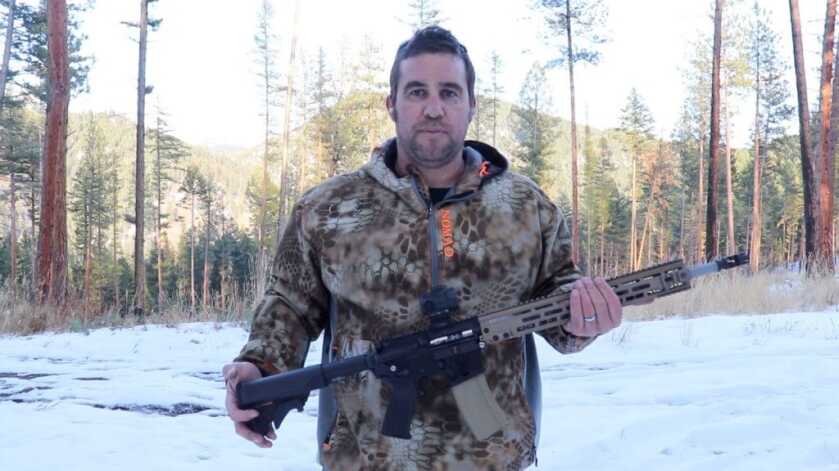
All of you that watch my reviews on GunsAmerica Digest have probably noticed that I have been shooting left-handed for most of this year. And it wasn’t because I got bored of being a righty. Last year around February, I ended up with a massive blood clot in my right shoulder, which has prevented me from shooting with my dominant hand ever since. And right after I got out of the hospital, we found ourselves in the Planned-demic. Which was obviously a source of stress.

As the COVID 19 madness started to unfold, I found myself in a precarious position. For the first time in my life, I really had to think about recoil sensitivity. Laughable a month prior. I was the guy that spent years shooting hundreds of rounds of 300 Win Mag per week, sponsored by Uncle Sugar. But now I was in a spot where I really needed the softest shooting gun I could possibly find, that still fired a lethal enough bullet to matter. If things went really pear-shaped, was I going to follow the doctor’s orders and shoot lefty in the street battle? Not likely. But I did need to worry about my longevity, as I have children that depend on me.
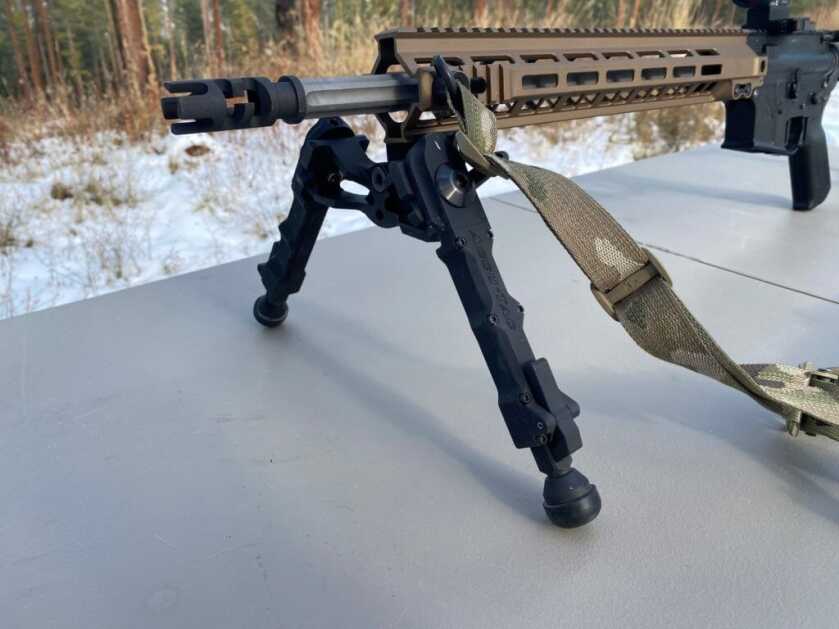
So I turned back to the barrel length for an AR that God forgot. The red-headed stepchild, the 18 inch. And for reasons we will cover in a minute, the perfect option for anyone worried about recoil. As you probably also remember, guns started flying off of shelves when COVID hit the news. However, parts were still available, at least for a while. Which left me the option of rolling my own.

I opted for an Aero Precision fluted barrel, in the aforementioned length. While recoil was a primary concern, I also took some lung damage from the clots. So my cardio fell apart, literally overnight. A fluted barrel gave me a very good balance of light enough to carry in this state, but heavy enough to mitigate some of the recoil. Anyone that has ever carried a mountain hunting rifle then fired the same caliber in a heavy tactical configuration knows what I am talking about. The fluted barrel also offered a good level of rigidity, cooling, and not heating up as fast as a pencil profile. MSRP $259
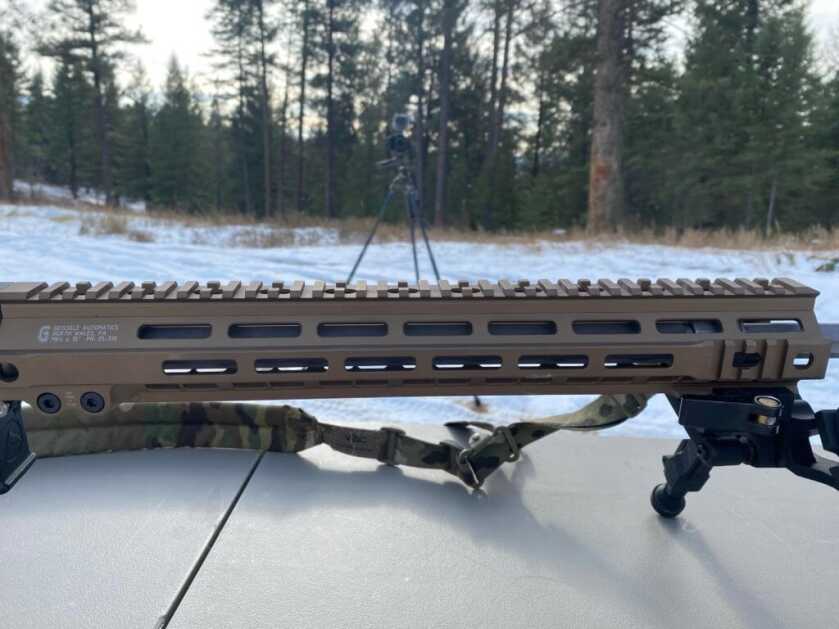
The handguard I chose was a bit of an indulgence, so know that there are cheaper handguards as an option. I picked the Geisselle 15 inch Mk4 in Desert Dirt Color, which set me back around $300. That is steep, but it does ship with a low pro gas block, which offsets the cost somewhat. A cheaper handguard would have been fine, but I always wanted one of these. Besides, if it’s the apocalypse, you know I’m going in style. The 15-inch model gives plenty of real estate for a modern grip, as well as provides optimal leverage for a bipod.
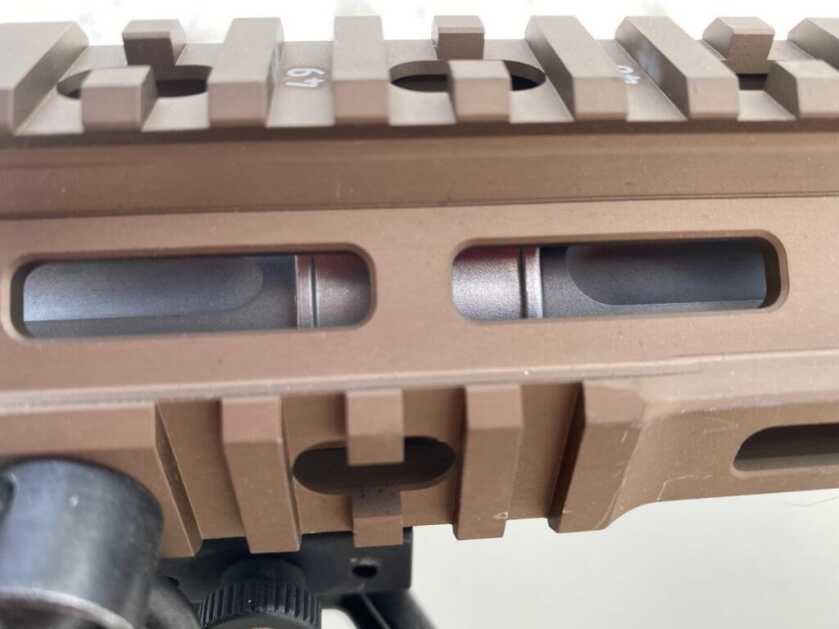
With the parts out of the way, why does an 18-inch recoil less than a 16 inch? Or does it even do so at a noticeable level? Yes, and the science here makes sense if you really think about it. Simplifying things just a bit, here is what happens with your AR 15 when the firing pin lights the primer. The bolt is locked closed. The round explodes, contained by the case, and slams the bullet into the barrel. The barrel is basically now plugged, with the hot expanding gasses of the burning powder pushing the bullet down the lands and grooves.

If you look at AR 15 barrels, you will see them listed with 4 different lengths of gas system. Pistol, Carbine, Mid, and Rifle length. And if you laid 4 barrels out side by side, you would notice that the ports are all different distances away from the chamber, rifle being the furthest. Could you, in theory, run a Pistol length gas system on a full length rifle? Maybe. But you wouldn’t want to. This is why.

As our bullet is traveling down the barrel, when is gas pressure the highest? Right when the bullet enters and plugs the barrel. As the bullet goes down the barrel, even with some powder still burning, we essentially get a greater space for our gasses to expand. More open barrel space, a bigger containment cylinder if you think about it. As the bullet passes the gas port, gas is forced into the gas tube, which travels back and cycles our bolt. So the further that gas port is away, the less pressure is coming rearward, and the longer it takes before the gas enters the tube and unlocks the bolt. With less pressure in the gas tube and the few milliseconds longer it takes to reach the gas tube we get less pressure everywhere and slower speeds out of our bolt carrier. Hence less recoil. So ironically enough, our shortest guns have the highest bolt speed, highest felt recoil, and slowest velocities. All other things being equal.

Since the port is at 12 inches on rifle length system, why can’t we just put a rifle length system on a 16-inch barrel? Ahh, good question. Because of another factor called dwell time. Which is some serious nerd stuff, and I wouldn’t even know this if I hadn’t shot for a rifle company years ago. As the pro shooter, you end up doing a lot of testing of new designs. My company was attempting to put a rifle length gas system on a 16.5-inch barrel, and never could get it to work. Because of dwell time issues.

Dwell time is the amount of time that the bullet is still in the barrel after the gas is routed into the gas tube. This is important because the bullet still has to act as a plug in order to keep the pressures high enough to cycle the bolt. The millisecond the bullet exits the barrel, the gas takes the path of least resistance out of the pressure system. So if your timing is off, you will lose pressure prematurely and have a very unreliable gun. It isn’t actually uncommon to see an 18-inch barrel with a mid-length gas system, as 18 is even kind of pushing the limit for a rifle length system.

Combined with a PWS FSC, this system was incredibly soft shooting. So soft shooting in fact, that I had to swap the buffer in my lower from a heavy to a normal to fire anything except 55-grain high-velocity rounds. It feels like a 22LR, which is hard to believe unless you have tried it. For my injured self, it was a match made in heaven.
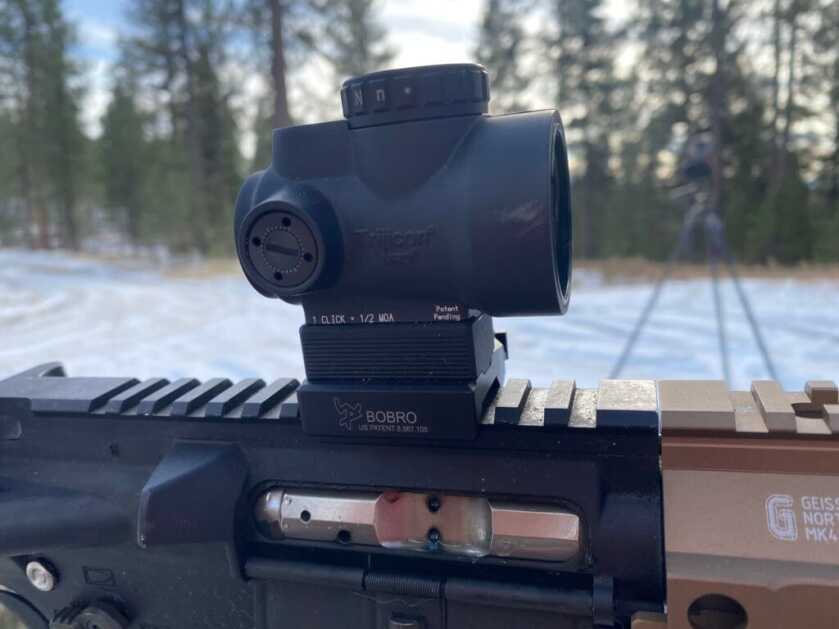
So while 18-inch barrels are rare, they are available. Daniel Defense makes an excellent one in the pro series models. Barnes Precision Machine makes one, as does Lone Star Armory, and Odin Works. 16 inch is by far the most popular, being the shortest legal on a rifle without a tax stamp. But the benefits to an 18 make it something you should reconsider. For that little bit more length and weight, you get a softer shooter, as well as a minor bullet velocity gain. It is absolutely worth trying out.

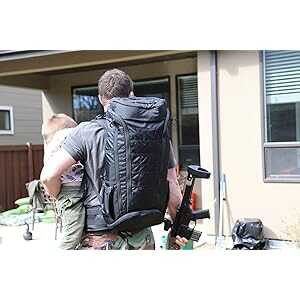
What are the pros and cons of an 18″ barrel with a mid length vs. a rifle length gas system? Which will work better for 62grn NATO rounds and 77grn rounds?
My 556 has a 24” barrel I use for varmits not very suitable for self defense ,my 6.5 Grendel has a 20” barrel suitable for anything in Ala with good placement. Charging sows is the only thing I’ve ever had a problem with it would kill them but was slow to stop them but so was my308.
Great. That barrel was sold out while I was checking out. You should get a commission.
Original M16 rifling twist was 1/12 for 55 grain bullets. The twist was changed to 1/7 when they adopted the 62 grain bullet, but it was needed more to stabilize the new longer tracer bullet than the 855.
Army FM shows groups fired with 55 grain and 62 grain in 1/7 twists, both shoot just fine.
62 grain doesn’t work as well in the older 1/12 twist, but those are pretty rare these days.
A Stag 3G is my one and only AR. It has a 3lb trigger and an 18” 1:8 twist barrel. I have never taken to the AR platform. It always seems completely unnatural, the placement of the controls, as compared to running any other platform. No matter how much I shoot it, it’s always “off”. Strangely, I prefer, and shoot much better, my original configuration Tavor rifle. As much as it too is different than my other platforms, it seems more natural, in more ways to me. If I had to peg the one thing that I really dislike about the AR, and like much better on the Tavor, it would be the charging handle. The chambering of the first round on/in an AR, has got to be the worst design ever incorporated in a firearm. Why the need to drop the rifle away from the body to sling shot a foot long handle? All semi auto rifles should have a side mounted charging handle…non reciprocating.
I had leukemia & a marrow transplant. I went from beast (6’5″/265 solid lbs) to barely able to walk 20ft. Picking up a milk jug was a challenge. I, too, have lung damage as a result. Walking and carrying anything takes it’s toll so I need a light weight, light recoil weapon. Thanks for this video.
I have a “box-o-parts” to cook up an AR, you just sold another 18″ barrel.
I thought about a 20″ for range, accuracy & softer shooting.
(I already have a CORE15 M4). I’m not making any 600 yd. shots so it makes sense.
What doesn’t make sense is an obsessive belief that 1.5 extra inches somehow precludes us from clearing a house.
22″ is truly unwieldy but, plenty use shotguns sporting 18″ barrels, no pistol grip & plenty have even longer tubes. No one laments that extra inch and a half on a shotgun.
I believe people’s “need” the shortest barrel is not for the maneuverability as much as the “cool factor.” It’s what all “the experts”(and mfctrs) say you need.
Operators, who wear all the gear and need maneuverability to work in tight, non-American style bldgs., carry 14.5″ M4s… We’re not them.
At 6’5″ I fill a hallway but, I wouldn’t feel the walls closing in if my AR is 1.5″ longer, especially w/stock collapsed.
My shotguns have fixed stocks and 18″ bbls (or more) and I can still clear my house without knocking over lamps. 😃 And I always have a Hi Power, fitted with light, laser and a HOLOSUN sitting on top, if my lomg guns can’t get me through.
My point is, people don’t NEED a 16″(or shorter) M4 to work a house.
Technique and knowing your environment is more important than a 1.5″ barrel length difference.
A pistol will get you thru, if you’re that afraid of bumping a wall.
Besides, ARs aren’t exactly the most interior-friendly weapons. You’ll quite likely be putting rounds through walls, people, animals, and everything else in the house.
I saw a .45ACP go through a 1″ board, a wood DVD case, 2 sheets of drywall, the side of a dishwasher, a 3/16” steel pan cover, the other side of the dishwasher and lodge itself deeply into ⁶the cabinet on the other side. A 5.56 round will do more than that.
My other issue is your ready dismissal of the Holosun as “not worthy.”
I have one and I’d count on it with out reserve. They’re a third the cost of an AimPoint, half that of a Trijicon but they perform to the same level. Their customer service is great. I had an issue 98% of people wouldn’t have noticed, or cared if they did. They immediately replaced it, no questions asked, with a smile. And the options available are fantastic. They also have 5 yr battery life with “shake awake,” just the slightest touch of the weapon and the sight turns on. Turns off after 15 minutes to preserve batteries.
The quality is consistent and on par with the others. Give it a chance before turning up a snooty nose at it. 🙂
I am saddened to hear about your medical surprises. What a drag on your family. I have followed your column for some time and felt kinship with a fellow Idahoan. I am way up north in the armpit of the state but still fell kinship.
I have had a Colt Hbar, 20″bbl for a long time. Great, accurate, soft recoiled shooter. It is my go to coyote eliminator.
Thank you for your articles and we are praying for you.
Good writeup.
18″ barrels also have the advantage of greater velocities, greater terminal ballistics (as a result) and slightly better accuracy.
The AR platforms benefit, as a matter of design – was/is the “modularity” of the system – and how easy it is to work on – and reconfigure.
As an M-14 Certified Armorer (the M-16’s predecessor) – anyone who has worked on that platform, can tell you how much easier it is to undo a barrel nut and swap an indexed/timed barrel in – versus having to align sight mounts, torque the barrel into proper timing (including turning or swaging the shoulder to ensure proper torque & timing), lapping bolts to get contact & proper headspace, etc..
In comparison – AR platforms are incredibly easy to work on.
Thanks also for the explanation of dwell – most folks aren’t familiar with the physics of how a platform actually works mechanically.
As far as the PWS FSC Brake – after experiencing how much it reduced the recoil on my SCAR-17 (because PWS was the OEM for this brake design) – literally every long gun in my rack (home built or off the shelf) runs of of these brakes. A little on the pricey side – but worth every penny…
Rick
“18″ barrels also have the advantage of greater velocities, greater terminal ballistics (as a result) and slightly better accuracy.”
Actually, because of the way barrel harmonics work, all other things equal, the shorter barrel will have better mechanical accuracy. Practical accuracy is dependent on many other factors, one of which is sight radius, which doesn’t factor in with optical sights or when both barrel lengths have 15 inch hand guards with with the sights in the same position. That being said, I like 18 inch barrels because they throw a little more weight to the front, which helps me with moving targets. I have two ARs with 18 inch barrels. They are the ones I shoot the most.
Some forget. The cartridge is half of the system. 5.56 cartridge was designed for 20″ barrels.
I have both 16″ and 20″ barreled weapons and I have much better accuracy from the 20″.
What twist in the barrel and why if I may ask?
The common goal of every rifle is to get the best accuracy out of it that you are able.In any given caliber a slower twist will give you better accuracy with a heavier weight bullet. Conversely a lighter bullet will give you better accuracy with a faster twist barrel. I’ll use the AR-15 as an example.
First generation ar barrels were issued with a 1 turn 10 twist. Translated means that the bullet does a complete revolution every 10”;The weight of the bullet was 55 gr. They went to a heavier bullet 62 gr. And slowed the twist to 1 and 9 twist. It’s all about stability of the bullet in flight. Basically it’s got to be fast enough to spin consistently straight. But there is also over stabilizing to consider by having to lighter bullet in a faster twist.
Going forward ( 50 plus years) a competition grade AR-15 barrel will have at the least a one and eight twist. The bullet weight starting at 69 gr.
I am confused. Is not a, 1 in 9 twist, faster than a, 1 in 10 twist?
You kind of stated it backwards. A lower second number in the twist rate is not slower, it is faster. You need a faster twist rate to stabilize heavier projectiles. 1 in 7 is faster than 1 in 10, not slower.
As one who runs an 18in barrel with rifle length gas system, well said and excellent article.
Great article!